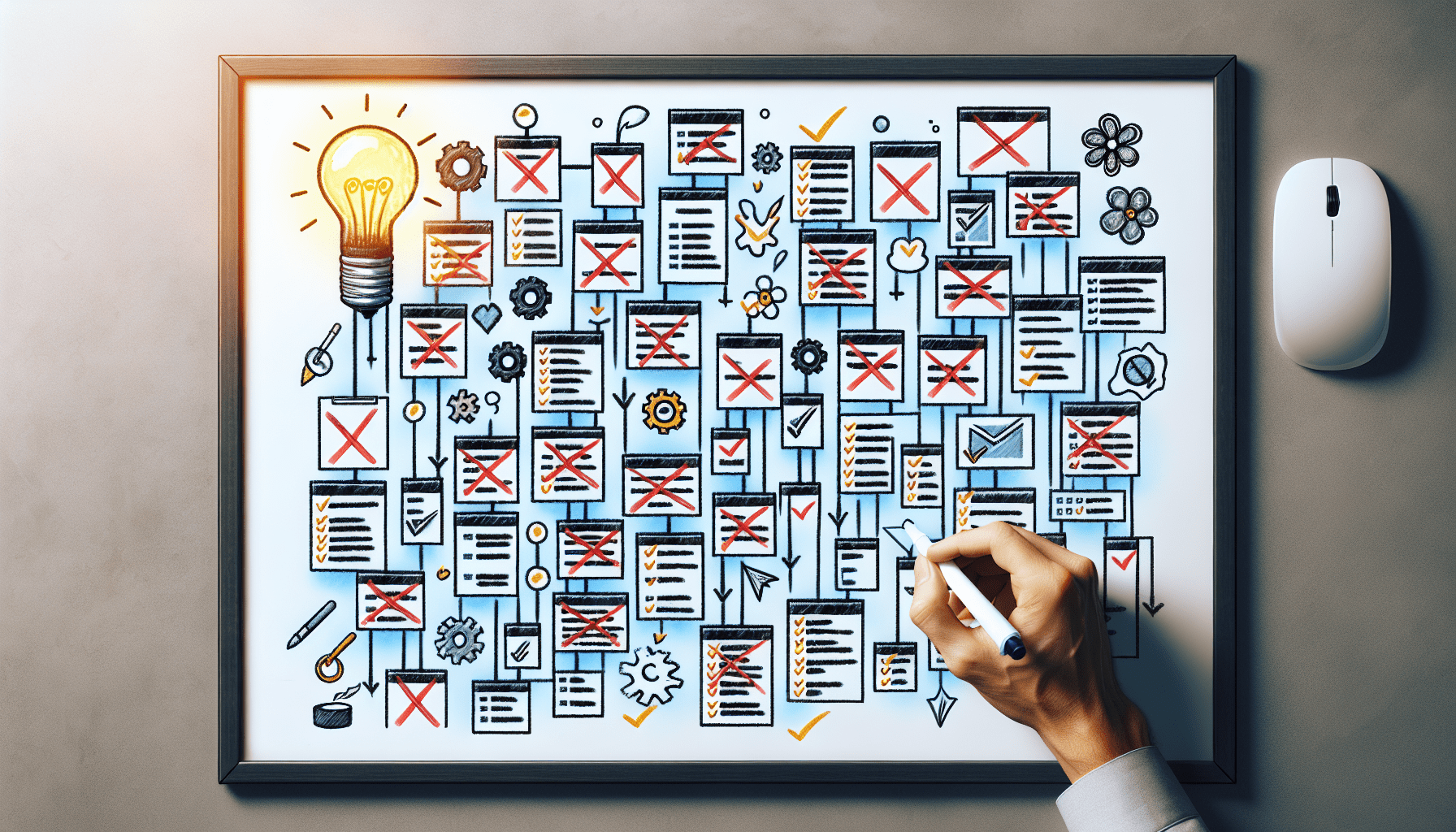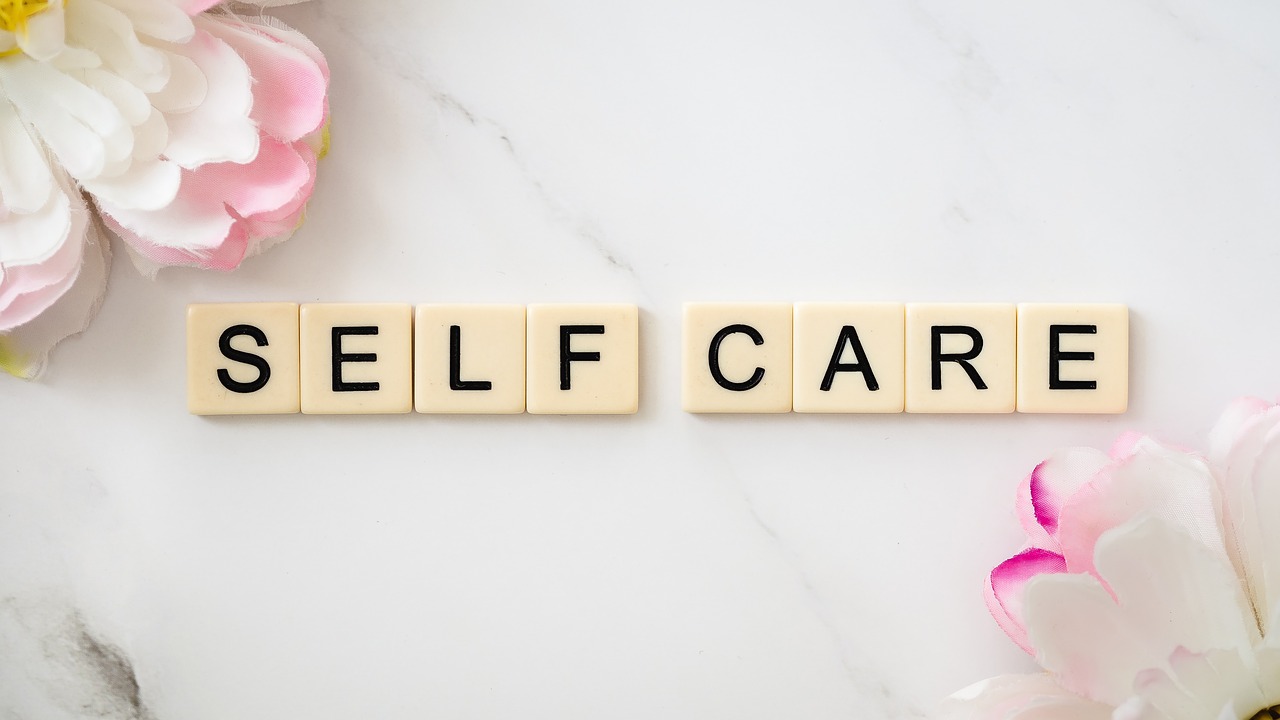
How to Maintain Work-Life Balance While Working Remotely

Did you know that remote employees work an average of 9.4 unpaid hours of overtime each week? This is shocking. Working more than 55 hours a week can increase the risk of stroke by 35% and the risk of dying from heart disease by 17%1. These figures show how crucial it is to manage your time well for a healthy work-life balance.
Remote work offers freedom but can also blur the lines between work and personal life. Many choose remote work to get a better work-life balance2. But, without set work hours and less face-to-face time with colleagues, you might end up working more3.
It’s vital to keep a balance for your productivity, health, and happiness2. By managing your workload well, you can enjoy time with loved ones and hobbies. Finding the right balance leads to healthier, happier, and more productive days2. Let’s explore some strategies to help you balance work and life while working remotely.
Key Takeaways
- Many choose remote work for a better work-life balance, showing its importance2.
- Work and personal life can easily mix, which can harm your balance3.
- A structured schedule and tools for communication can greatly improve your work-life balance23.
- Having a specific workspace at home helps in being more productive and keeps work and leisure separate3.
- Taking breaks, like proper lunch breaks and short walks, can increase energy and keep you balanced23.
Understanding Work-Life Balance
In today’s world, it’s key to grasp the ideas of work-life balance and work-life integration. These ideas help with employee well-being, boost productivity, and make jobs more satisfying.
Definition and Significance
Work-life balance means sharing time between work and personal life well. It helps avoid overworking and stress, giving people more control over their time. Having time for fun activities can make people happier and more motivated.
According to a “April 2021 McKinsey survey,” 54% in the US and 49% worldwide felt burnt out4. Working from home can give more freedom, making people more productive and happy. This leads to better work-life integration.
Impact on Health and Happiness
There’s a clear link between work-life balance and well-being. Those working full-time in offices feel less satisfied with their balance. But, those working from home are 20% happier than those in offices4.
Working from home has many benefits. 41% think it helps them work better, and 65% are happy with their jobs5. It also lowers stress for 36% of workers5. A September 2021 survey by The Hartford found 61% felt burnt out4, showing how vital it is to manage stress well.
Using work-life balance strategies can bring many benefits. It helps with relationships, creativity, and overall satisfaction. Engaging in hobbies is a big part of this.
Remote and hybrid work models have consistently shown improvements in overall well-being4.
In conclusion, focusing on employee well-being through work-life integration boosts health, happiness, and performance. For more on how hobbies help with balance, check out this resource4.
Importance of Setting a Schedule
Having a clear schedule is key to balancing work and personal life when working from home. Flexible schedules help keep work and personal time separate. This way, you can manage work without taking over your personal time. Using smart work-from-home strategies leads to a productive and fulfilling routine.
Creating a Structured Workday
Setting specific working hours is part of creating a structured workday. It’s vital to tell your team when you’re available to work. This helps manage expectations and improve teamwork. Sticking to work hours helps you stay focused and reduces stress. Last year, a study showed that many UK workers started using hybrid working, proving the need for structured schedules for a good work-life balance6.
Finding Time for Personal Activities
It’s also crucial to make time for personal activities to stay mentally and physically well. Activities like exercise, hobbies, and spending time with family help reduce work stress. Scheduling these activities makes sure they’re a regular part of your life. Having a clear routine helps prevent burnout and boosts productivity. With more people living alone, finding personal time is more important than ever to fight social isolation and protect mental health7.
| Benefits of a Structured Workday | Benefits of Personal Activities |
|---|---|
| Improved Productivity | Better Mental Health |
| Reduced Stress | Increased Happiness |
| Clear Boundaries | Enhanced Physical Health |
Overall, a well-planned schedule that includes both work and personal time is essential for a healthy life while working from home.
Utilising Communication Tools Effectively
For remote workers, using communication tools well is key. It helps them show they’re online and manage team expectations. Tools like Slack and Google Calendar are great for this. They let teams across different time zones know when people are available and not.
Indicating Online and Offline Hours
Digital nomads often move a lot, so it’s vital to be clear about when you’re free. Platforms like Microsoft Teams or Slack let you set your status. This way, your team knows when they can talk to you. A 2022 Gallup survey found 80% of people work remotely or in a hybrid setup. So, it’s more important than ever to show when you’re online or offline8.
Managing Team Expectations
It’s important to manage expectations for a productive team. Setting clear goals and communication channels is key. Cloud-based solutions help remote teams stay productive and share tasks well9. A McKinsey report showed 58% of people work from home at least once a week, and 35% five days a week8.
Regular meetings on video calls like Zoom can make everyone feel connected. They keep the team on track with the project goals9.
| Challenges | Solutions |
|---|---|
| Time Zone Differences | Use scheduling tools to indicate availability |
| Miscommunication | Leverage platforms with clear communication channels |
| Task Management | Adopt project management software for task allocation |
| Team Morale | Schedule regular check-ins through video conferencing |
Implementing Breaks throughout the Day
It’s key to take breaks while working from home. These breaks help fight off the feeling of being alone and stuck. They also boost your productivity and creativity, keeping your work-life balanced10.

Remote workers often work long hours, mixing work with personal life. Using breaks for personal tasks makes them useful and helps with work-life balance11. Taking regular breaks also lowers stress and anxiety from always being connected12.
Plan short breaks for physical activities or hobbies. This supports your mental and physical health, following best practices for remote work1110. A study by Owl Labs shows remote workers are 22% happier at work than those in the office, thanks to good breaks11.
Adding breaks to your work-at-home routine is easy. Here’s a simple guide to effective break strategies for every day:
| Break Duration | Recommended Activities |
|---|---|
| 5 Minutes | Stretching exercises, quick walks |
| 15 Minutes | Light meditation, snack break |
| 30 Minutes | Lunch, moderate exercise |
| 60 Minutes | Reading, hobby time |
Using these break tips helps follow best practices for remote work. This leads to a more balanced and productive work-from-home setup.
Creating a Designated Workspace
Having a specific spot for work at home is key to keeping remote workers engaged. It helps separate work from personal life, keeping your mind clear and boosting productivity. A tidy workspace cuts down on distractions, letting you focus better on your tasks1314.
Choosing a Clutter-free Space
Choosing a spot free from clutter is vital for staying focused. Spare rooms or certain corners of your home can become great work areas away from distractions14. Make sure your desk is clear of things you don’t need and add personal touches like plants or art. This makes your space welcoming and helps you stay focused and efficient14.
Separating Work from Leisure Areas
It’s key to keep work and leisure separate for a balanced life. Setting clear boundaries at home means you can fully focus on work when in your workspace15. Moving away from work signals it’s time for personal activities, preventing overworking and burnout15. This approach helps with remote team engagement by offering a structured yet flexible schedule13.
Work-Life Balance for Remote Workers
Achieving a good work-life balance as a remote worker means knowing how to adjust your work hours. Companies are now offering 6-hour days or 4-day weeks. This gives you more free time and keeps you productive16.
It’s also key to set clear boundaries between work and leisure. This reduces stress and saves time. Knowing when you work best can make you more productive and focused16.
Good communication is also vital. With more people working from home during the pandemic, remote work in fields like medical communications grew17. By setting clear times for work and rest, you can manage your team’s expectations. This helps keep everyone’s mental health up and work-life balance in check17.
Employers now offer unlimited holidays because they know happy employees work better and are more satisfied16. A good work-life balance cuts down on staff leaving and makes the company look good16.
To stay productive, listen to what you need and take breaks when you should. Taking care of yourself helps your work-life balance. This makes you happier at work and more engaged16.
Here’s a table that shows how different strategies affect well-being and productivity.
| Strategy | Impact on Employee Well-Being | Impact on Remote Work Productivity |
|---|---|---|
| Adjusting Work Hours | Reduced stress and improved mental health | Increased efficiency during peak focus times |
| Setting Clear Boundaries | Enhanced job satisfaction and reduced burnout | Minimised time waste and optimised workflow |
| Unlimited Holidays | Higher overall job satisfaction and engagement | More effective work in shorter periods |
| Optimising Remote Communication | Decreased meeting fatigue | Better expectations management |
Strategies for Balancing Family and Work
Remote workers often find it hard to balance work and family life. But, using the right strategies can really help improve their well-being.
Scheduling Time with Family
One important way to keep a good balance is to plan family time. Set aside hours just for family activities. This way, work won’t take over your personal time.
Studies show that spending quality time with family strengthens emotional bonds and creates lasting memories18. It also makes you more positive about your job, showing how vital family time is18.
Setting Boundaries
It’s key to have clear boundaries for a good work-life balance. Having ‘work-free’ times helps separate work from personal life. Since remote work lacks clear physical boundaries, it’s hard to know when to stop working19.
Practices like mindfulness and setting work hours help keep these boundaries clear. This leads to a better work-life balance and improves well-being1918.
Practising Self-Care and Exercise
Adding self-care and exercise to your daily life is key for staying healthy and handling stress. Being active boosts your health and helps balance work and personal life.
Importance of Physical Activity
Being active is vital for your health. Studies show that staying fit helps you stay focused and avoid burnout at work20. A well-designed workspace also helps you sit comfortably and avoid pain20. Regular exercise and managing your tasks well can cut down stress and help you focus better on work21.

Mental Health and Relaxation
Looking after your mind is just as crucial as staying fit. Taking short breaks keeps you sharp and stops you from getting overwhelmed20. Feeling stressed can make you tired, less creative, and more likely to get sick21. Teams working from home support self-care by setting clear boundaries and using tools to show when you’re available, helping everyone’s mental health21.
Self-care activities like meditation, hobbies, and flexible breaks can really boost your mental health. These habits help you stay on top of your game and enjoy your job more from home. Keeping fit and looking after your mind are key to a happy and balanced life while working remotely.
Building Social Connections
It’s key to build social connections for remote workers to stay engaged and not feel isolated. In fact, 20% of remote workers feel lonely, showing how important it is to connect with others22. Joining virtual meet-ups or online groups can really help improve your social circle and separate work from home life.
Flexible membership options let remote workers pick how often they’re in a shared office, creating a community feel23. Being in these spaces helps fight off loneliness and keeps people linked to a wider group23. Plus, regular visits to a shared office lead to deeper talks, networking, and working together23.
Having strong social ties is tied to lower depression and anxiety, showing the mental health perks of keeping these bonds23. Even just going to an office some days can make you more active, adding to a better work-life balance23. Using these strategies can greatly improve your engagement and well-being in a remote job.
Here’s a look at how remote work and shared offices compare:
| Aspect | Remote Work | Shared Office |
|---|---|---|
| Social Connections | Virtual meet-ups and online communities | In-person interactions and networking |
| Productivity | 13% more productive than in-office counterparts22 | Access to resources and facilities enhances productivity23 |
| Mental Health | 20% experience loneliness, high levels of exhaustion22 | Lower rates of depression and anxiety23 |
Avoiding Perfectionism
Chasing perfection can make work longer and more stressful, hurting your mental health when working from home. It’s key to understand that aiming for perfection is not always possible or good for you. Aim for excellence, but don’t let it stress you out too much.
Working from home brings its own set of challenges, like juggling deadlines, video calls, and household tasks. Trying to keep up a high standard in all these areas can lead to burnout24.
Working over 48 hours a week can make you more anxious and depressed than working less25. This shows that overworking for perfection can harm your mental health. On the other hand, having a good work-life balance means you’re less likely to miss work and more engaged25.
It’s important to focus on making progress, not just being perfect. Technology can help keep work and personal life balanced if used right. But if not, it can cause ongoing stress and emotional burnout25.
To fight perfectionism, set achievable goals and accept that mistakes help us learn. Putting your mental health first is crucial. Also, staying connected with others and tracking your work can reduce stress and keep you mentally healthy while working from home24.
Disconnecting After Work Hours
Disconnecting after work is key for a good work-life balance. With more people working from home, it’s vital to set clear boundaries.
The 2019 State Of Remote Work report by Buffer found that remote workers struggle most with unplugging after work26. This shows we need a clear plan for our free time.
Establishing End-of-Day Rituals
To mark the end of work and start a digital detox, try simple end-of-day rituals. This could be leaving your work area, doing something relaxing, or going for a short walk. These actions are important as work and personal life can get mixed up when working from home26. Countries like France and Spain have laws about not working too much, and setting your own rituals can help you do the same27.
Managing Notifications
It’s important to manage your notifications to keep a digital detox going and have personal time. Turning off work alerts during your free time helps set clear boundaries and lowers stress28. Studies show that 48% of remote workers find it hard to switch off from work, showing we need to manage our notifications better28. Also, 55% felt pressured to work while on holiday, which underlines the need for better control over notifications28.
Conclusion
Getting a good work-life balance is key for remote workers, thanks to tech advances29. The shift to remote work during the COVID-19 pandemic showed us how vital it is to have good strategies for balancing work and personal life29.
Good remote work practices are crucial. Having set schedules helps keep work and personal life separate. It also makes sure you’re productive and have time for yourself. Tools like showing when you’re online or offline help everyone know what to expect30. It’s also important to disconnect at the end of the day to prevent burnout29.
It’s important to tailor these strategies to fit your needs. This means setting up a dedicated workspace and taking care of yourself. Joining in virtual team activities like happy hours can also help you feel less isolated and build a team bond29.
In conclusion, adapting to remote work well means using and adjusting these strategies. This way, you can find a lasting balance between work and life. It leads to better productivity, less stress, and a better life overall3029.






















